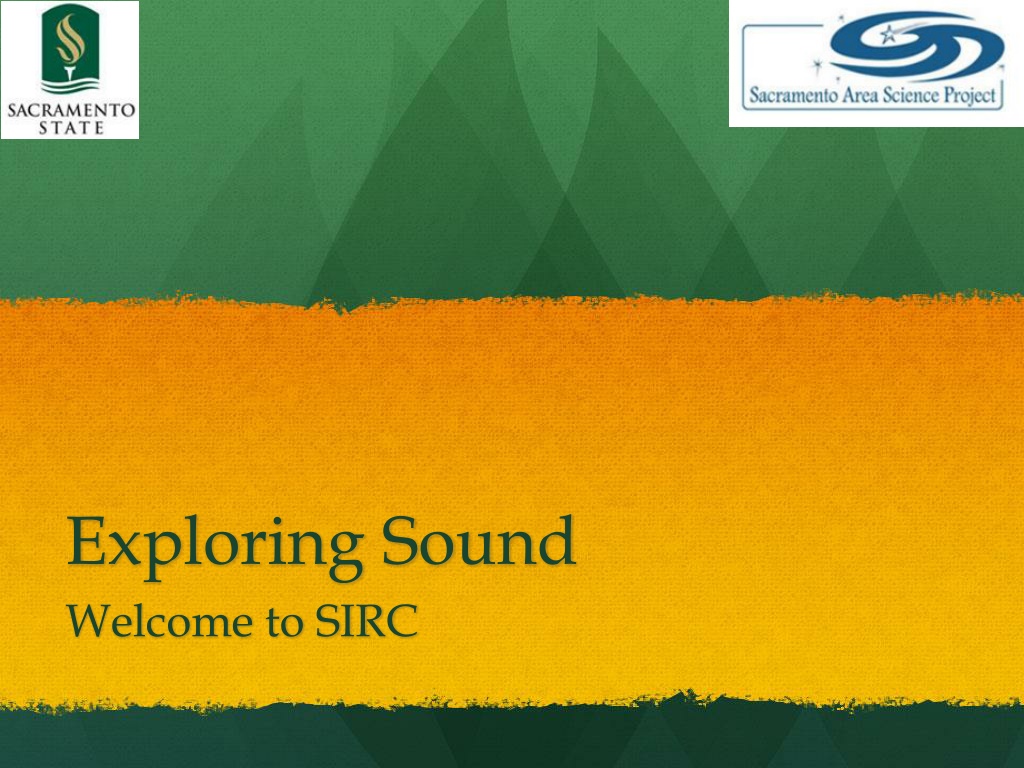Exploring Sound: Engaging Activities for Teaching Young Learners about Sound Energy
Engage young learners in exploring sound energy through hands-on activities focusing on vibrating materials, sound production, and energy flow. Adapted from an adult-designed activity, this collaborative approach aligns with NGSS standards, encouraging students to investigate, observe, and analyze the properties of sound. Students will use noisemakers, identify moving parts, trace energy flow, reflect on discoveries, and construct model statements, enhancing their understanding of how sound is produced and transmitted. Debriefing emphasizes scientific practices, cross-cutting concepts, and strategies for making the experience suitable for first-graders.
Download Presentation

Please find below an Image/Link to download the presentation.
The content on the website is provided AS IS for your information and personal use only. It may not be sold, licensed, or shared on other websites without obtaining consent from the author. Download presentation by click this link. If you encounter any issues during the download, it is possible that the publisher has removed the file from their server.
E N D
Presentation Transcript
Exploring Sound Welcome to SIRC
Disclaimer I know something about science. I know something about NGSS and teaching NGSS science. You folks know everything about teaching little people. So this will be a collaboration. I brought an activity designed for adults that needs to be adapted for little kiddos. You re going to help me with that.
Our standards Performance Expectation: 1-PS4-1. Plan and conduct investigations to provide evidence that vibrating materials can make sound and that sound can make materials vibrate. Disciplinary Core Idea: PS4.A. Wave Properties - Sound can make matter vibrate, and vibrating matter can make sound.
Exploring Sound Task #1: Let s play! Use your noisemakers to make sound. Observe carefully what happens when you make sound. Analyze how two of your noisemakers make sound. Draw a picture Explain how the sound is made What do all the noise makers have in common? Write it down somewhere. Include a diagram of one of your noisemakers with an explanation of how it makes sound.
More Sound Task #2: What is moving? For your two noisemakers, identify the moving parts and label them in your diagrams. Label the moving part in the diagram in your notebook. Draw the moving air particles as well.
Sound is Energy Task #3: Trace the energy flow. Show on your diagram: where the energy comes from, how the energy moves through the sound maker where the energy went. What are all the parts of the system that was involved in making the sound and hearing the sound? Task #4: Reflective writing. What have we figured out so far?
Constructing our model Let s start a chart: Sound Model Let s write some model statements.
Enlarging the model Task #6: Sound investigation This is your chance to: Ask a question Design an investigation Analyze some data.
Debriefing the science What practices did we use? What cross cutting concepts are we exploring? How could we foreground the cross-cutting concepts? What do we do to make this an experience appropriate for first-graders?





























